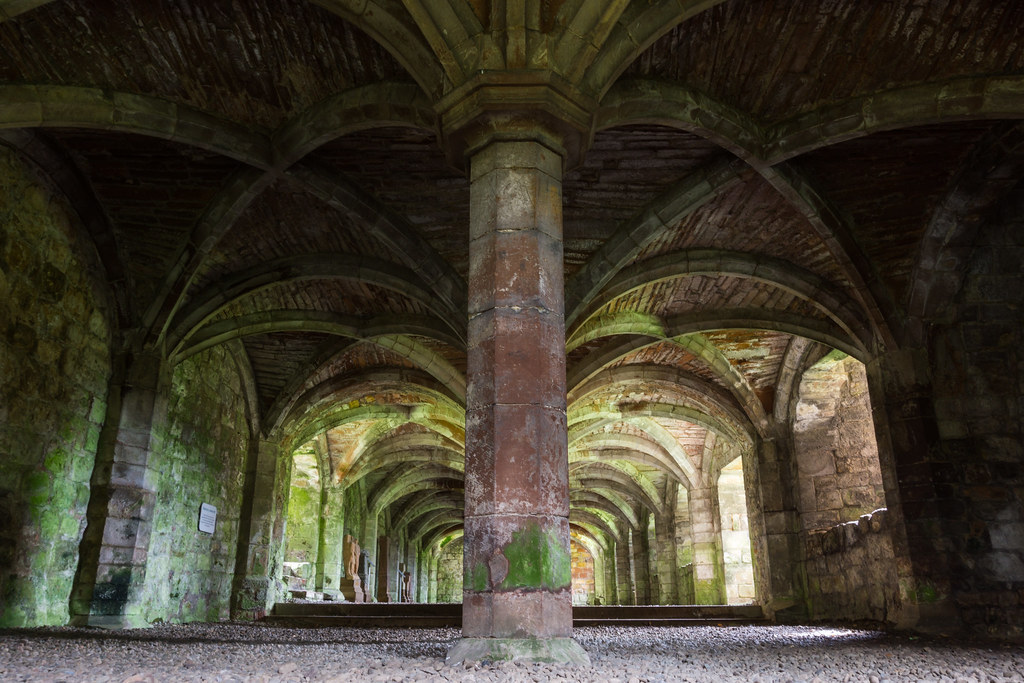Architecture is more than just buildings; it is a reflection of our history, culture, and aspirations. From the grandeur of Gothic cathedrals to the sleek lines of modern skyscrapers, each architectural style tells a unique story. In this comprehensive guide to design styles, we will delve into the fascinating world of architecture typology. Whether you are an aspiring architect, a design enthusiast, or simply curious about the built environment around you, this exploration will take you on a journey through time and space, unraveling the secrets behind the most iconic architectural styles. Get ready to discover the beauty and significance of architecture typology, as we unravel the threads that connect our built heritage.

Top List: Exploring Architecture Typology: A Comprehensive Guide to Design Styles
Minimalist architectural typology focuses on the concept of simplicity in design. This style emphasizes clean lines, open spaces, and a minimal use of decoration. The goal is to create a sense of calm and tranquility in the built environment. By stripping away unnecessary elements, minimalist architecture highlights the beauty of simplicity and allows the form and function of the space to take center stage.
Religious structures often have unique design styles that reflect the spiritual beliefs and cultural traditions of the community they serve. Architectural typology in religious structures encompasses a wide range of styles, from grand cathedrals to humble chapels. These buildings are designed to create a sense of awe and reverence, with features such as soaring ceilings, intricate stained glass windows, and ornate decorations. The design of religious structures aims to facilitate worship, meditation, and spiritual connection.
Industrial architectural typology explores the influence of factories and industrial processes on design styles. This style emerged during the industrial revolution when buildings were designed to accommodate large-scale manufacturing and production. Industrial architecture often features exposed structural elements, such as steel beams and brick walls, as well as large windows to maximize natural light. The design emphasizes functionality and efficiency, with an emphasis on practicality and adaptability to changing needs.
Architectural typology is a fundamental concept in the field of architecture. It refers to the classification and categorization of buildings based on their form, function, and design principles. This introductory exploration aims to shed light on the world of architectural typology, providing a comprehensive overview of its significance and applications.
Architectural design styles have evolved over centuries, reflecting the cultural, social, and technological changes of each era. This in-depth examination delves into the various design styles that have shaped the built environment, from the classical orders of ancient Greece and Rome to the sleek lines of contemporary architecture. By exploring the characteristics, influences, and key examples of each style, we can gain a deeper understanding of the rich tapestry of architectural design.
Architectural typology encompasses more than just design styles. It also considers the contextual factors that shape the built environment, such as geography, climate, and cultural traditions. This journey through time and space explores how architectural typology has been influenced by these factors, resulting in a diverse range of building forms and functions around the world. By understanding these influences, we can appreciate the unique qualities and significance of different architectural typologies.

Architectural typology is a fascinating subject that delves into the fundamental principles and elements of design. By exploring architectural typology, we can gain a deeper understanding of how different styles and structures have evolved over time. From ancient civilizations to modern-day innovations, this exploration allows us to appreciate the essence of design and its impact on the built environment.
Architectural design styles encompass a wide range of approaches and aesthetics that shape the character of a building or space. From classical to contemporary, each style has its unique characteristics and influences. This comprehensive guide aims to provide an in-depth exploration of various architectural design styles, offering insights into their origins, key features, and the timeless appeal they bring to the spaces they inhabit.
Architectural typology encompasses a diverse range of styles, from the ornate and intricate Gothic architecture to the clean lines and functionalism of the Modernist movement. This exploration seeks to unravel the richness and diversity within architectural typology, shedding light on the unique characteristics and influences that have shaped these styles. By understanding the nuances of each typology, we can gain a deeper appreciation for the architectural heritage that surrounds us.

Architectural typology is heavily influenced by culture, as different regions have their own unique design styles. These design styles are shaped by the history, traditions, and values of the culture they belong to. For example, Mediterranean architecture is characterized by its use of arches, courtyards, and earthy colors, reflecting the region's warm climate and close connection to nature. In contrast, Scandinavian architecture is known for its minimalism, functionality, and use of natural materials, reflecting the region's emphasis on simplicity and sustainability.
In recent years, there has been a growing focus on sustainable architecture, which aims to minimize the negative impact of buildings on the environment. This includes incorporating energy-efficient design elements, using renewable materials, and implementing strategies for water conservation and waste reduction. Sustainable architecture not only helps to reduce carbon emissions and preserve natural resources, but it also creates healthier and more comfortable living environments for occupants. As a result, many architects are integrating sustainable design principles into their architectural typology, leading to the emergence of eco-friendly and green buildings.
Architectural typology plays a crucial role in urban planning, as buildings shape the overall character and functionality of cities. The design, scale, and layout of buildings influence the way people interact with their surroundings and impact the urban fabric. For instance, the presence of high-rise buildings in a city can create a dense and vertical urban environment, while low-rise buildings with ample green spaces can create a more spread-out and suburban feel. By understanding the relationship between architectural typology and urban planning, architects and urban planners can work together to create cities that are not only aesthetically pleasing but also functional and sustainable.
Tracing the Development of Design Styles over Centuries
Analyzing Landmark Buildings and their Significance
Examining the Impact of Innovation on Design Styles

Minimalist architectural typology focuses on the concept of simplicity in design. This style emphasizes clean lines, open spaces, and a minimal use of decoration. The goal is to create a sense of calm and tranquility in the built environment. By stripping away unnecessary elements, minimalist architecture highlights the beauty of simplicity and allows the form and function of the space to take center stage.
Religious structures often have unique design styles that reflect the spiritual beliefs and cultural traditions of the community they serve. Architectural typology in religious structures encompasses a wide range of styles, from grand cathedrals to humble chapels. These buildings are designed to create a sense of awe and reverence, with features such as soaring ceilings, intricate stained glass windows, and ornate decorations. The design of religious structures aims to facilitate worship, meditation, and spiritual connection.
Industrial architectural typology explores the influence of factories and industrial processes on design styles. This style emerged during the industrial revolution when buildings were designed to accommodate large-scale manufacturing and production. Industrial architecture often features exposed structural elements, such as steel beams and brick walls, as well as large windows to maximize natural light. The design emphasizes functionality and efficiency, with an emphasis on practicality and adaptability to changing needs.

In conclusion, exploring architecture typology provides us with a comprehensive guide to design styles that have shaped the built environment throughout history. Understanding the significance of different architectural styles allows us to appreciate the rich cultural heritage embedded in our cities and towns. Moreover, the impact of design styles extends beyond aesthetics, influencing the functionality, symbolism, and social dynamics of spaces. From ancient civilizations to modern-day societies, architecture typology remains relevant in shaping our built environment and reflecting our values and aspirations. By delving into the intricacies of design styles, we gain a deeper understanding of the past, present, and future of architecture, and the ways in which it continues to shape our lives. Stay connected with us on our social media accounts to explore more insights into the world of architecture.
Immerse yourself in architecture’s most boundary-pushing ideas—where innovative home improvements meet visionary urban developments. Discover new building techniques, materials, and creative concepts that are redefining how we shape our spaces on a global scale.